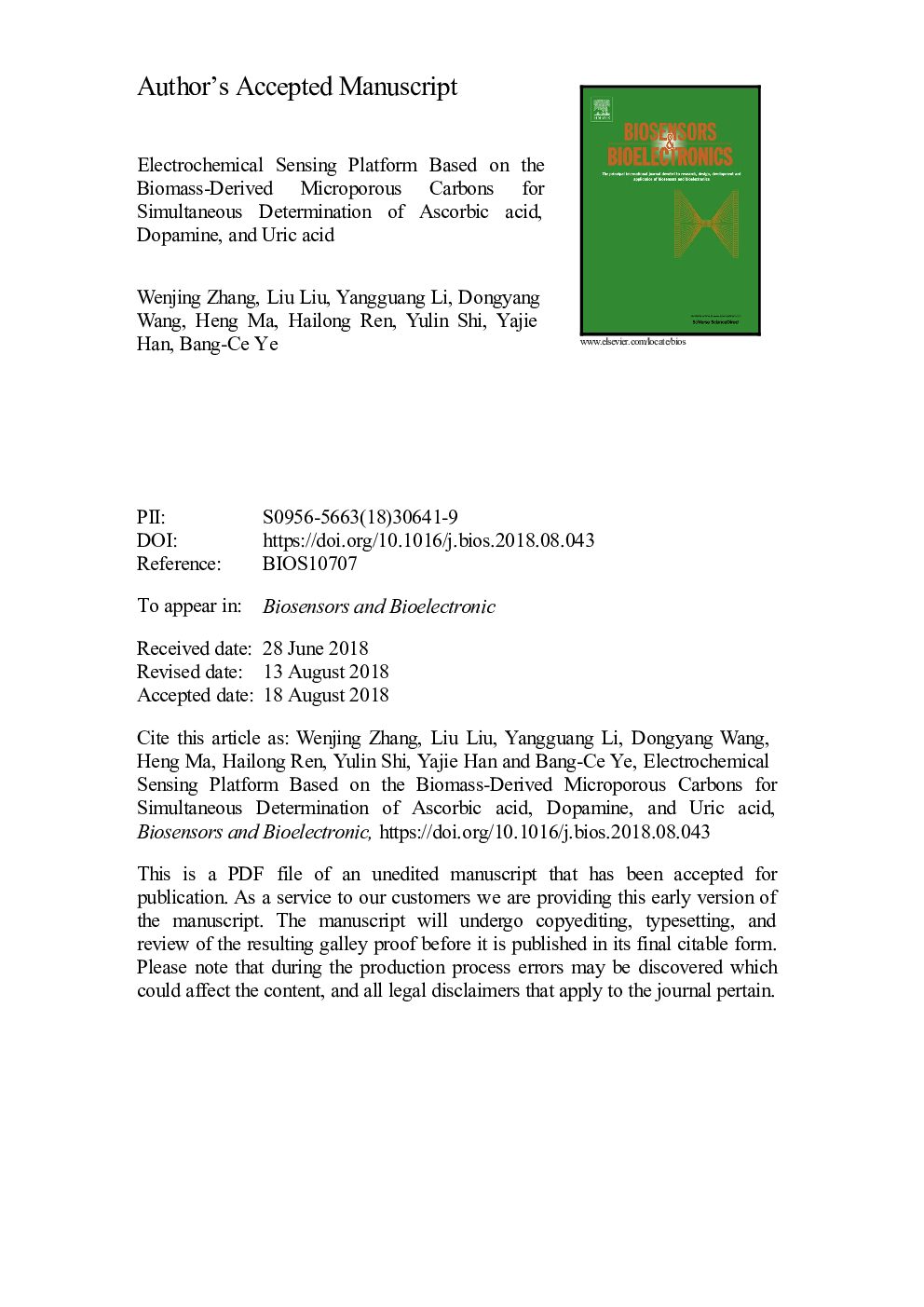| Article ID | Journal | Published Year | Pages | File Type |
|---|---|---|---|---|
| 8960641 | Biosensors and Bioelectronics | 2018 | 15 Pages |
Abstract
A novel and highly selective electrochemical sensing platform (ZnCl2-CF/GCE) based on combination of kiwi skin and zinc chloride nanoparticles was developed for the simultaneous detection of ascorbic acid (AA), dopamine (DA), and uric acid (UA). The constructed electrode shows a high surface area and micro-mesoporous structure. And the electrochemical behaviors of the electrode were further explored by cyclic voltammetry (CV), impedance analysis (EIS), and differential pulse voltammetry (DPV). Under the optimal conditions, the ZnCl2-CF provides a high sensitivity and selective signaling in the co-existence system of AA, DA, and UA with linear response ranges of 0.05-200â¯Î¼M, 2-2000â¯Î¼M, and 1-2500â¯Î¼M, respectively. The detection limits (S/Nâ¯=â¯3) were calculated to be 0.02â¯Î¼M, 0.16â¯Î¼M, and 0.11â¯Î¼M, respectively. In addition, the method has been successfully applied to determine AA, DA, and UA in real samples, which provides potential applications in further sensing study.
Related Topics
Physical Sciences and Engineering
Chemistry
Analytical Chemistry
Authors
Wenjing Zhang, Liu Liu, Yangguang Li, Dongyang Wang, Heng Ma, Hailong Ren, Yulin Shi, Yajie Han, Bang-Ce Ye,
